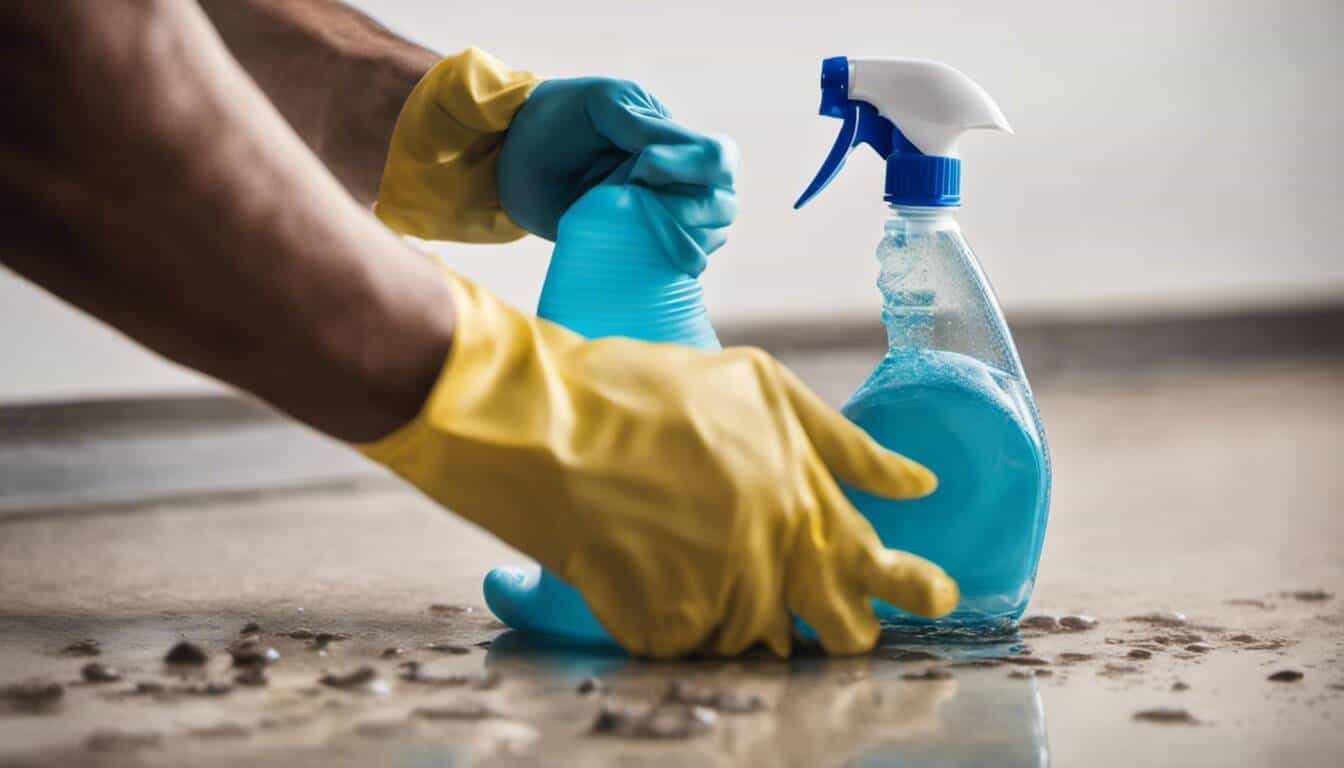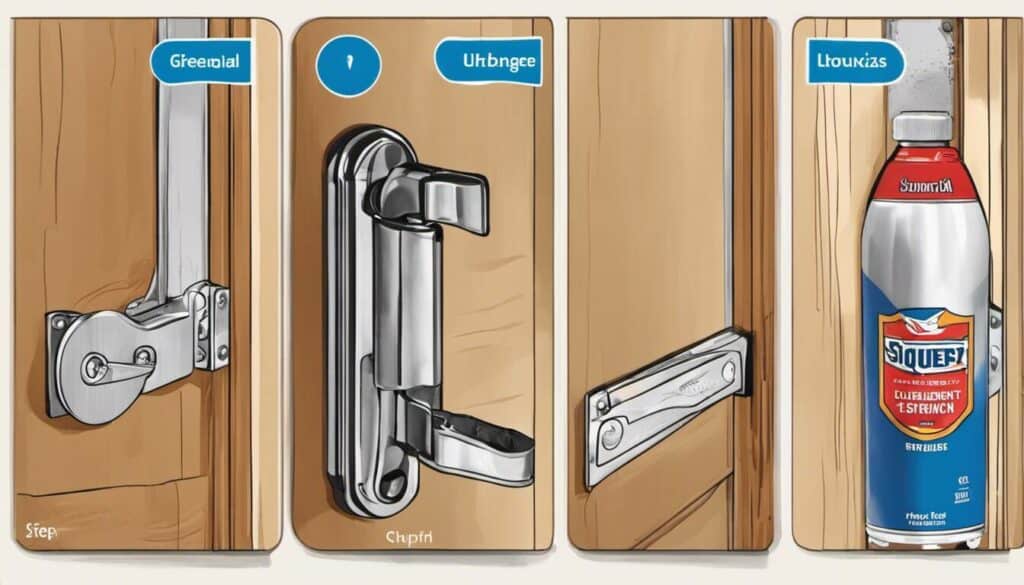Tired of the strenuous waxing and constant upkeep? That was me. It’s time to revolutionize your floor maintenance process. Let me introduce you to a breakthrough alternative—no more weary afternoons scrubbing away. I’ll share how I found a future where my floor dazzles with minimal effort, saying goodbye to arduous cleaning and regular waxing. I explore this solution that enhances flooring elegance and creates a beautiful environment with less stress! If you’re looking for the best way to clean wood floors, you’ve come to the right place!
Waxing floors can be time-consuming, expensive, require frequent upkeep, create slip hazards, leave an unpleasing appearance due to dirt and grime build-up, and can become a recurring expense in maintenance costs. Instead of waxing, sealing surfaces with a sealer like MicroGuard or Apex Floor Coating offers a cost-effective alternative that creates better traction, requires less ongoing maintenance, prevents corrosive build-up, and looks great over time.

“In truth, there’s no magic solution that will completely eliminate the need for floor maintenance — it all depends on the type of use and traffic the floor receives daily. Nevertheless, a well-selected alternative to traditional waxed floors can greatly reduce the time and effort required for regular upkeep. By choosing well, and considering factors like durability, slip resistance, and ease of cleaning, you can indeed minimize the time you spend on floor maintenance.”
Jocelyn Pritchard, Certified Flooring Consultant
Drawbacks of Traditional Waxing
Traditional waxing has long been a popular choice for maintaining and protecting floors. However, it is not without its drawbacks. One key drawback is the labor-intensive nature of waxing floors. The process often involves multiple attempts to strip away existing layers of wax, which can be time-consuming and physically demanding. Moreover, if the wax is not completely removed, it can result in build-up over time, diminishing the appearance and effectiveness of the wax. For those dealing with sticky laminate floors, this can be particularly challenging, which can be time-consuming and physically demanding. Moreover, if the wax is not completely removed, it can result in build-up over time, diminishing the appearance and effectiveness of the wax.
Stripping and waxing floors can be labor-intensive, time-consuming, and costly.
Another drawback is the involvement of chemicals in the waxing process. Many traditional waxes contain harsh chemicals that may pose health hazards to those applying them or residing in the space where the floor is being treated. This can be particularly concerning for individuals with sensitivities or allergies to certain chemicals. Additionally, the fumes emitted during the application and drying of wax can be unpleasant and potentially harmful if proper ventilation is not maintained.
Sealing surfaces with a sealer can offer a more efficient and cost-effective alternative.
These drawbacks highlight some of the challenges and limitations associated with traditional waxing methods. Fortunately, there are alternatives available that address these concerns while still providing effective protection and maintenance for your floors. One such alternative is floor sealers, which we will explore in more detail next.
- In a comparative study, it was found that wax floors need maintenance approximately twice a year, which is higher than other alternatives such as sealers, which require maintenance only once every three to five years.
- According to a survey conducted by the National Safety Council, wax floors are more likely to contribute to slips and falls due to their smooth surface lacking traction. Sealer-coated surfaces provide safer traction reducing slip hazards.
- The International Journal of Facility Management published an article stating that removing old wax layers is labor-intensive and can cause discoloration and unsightly appearance due to dirt and grime trapped in them. On the contrary, sealers leave a glossy look and prevent corrosive build-up.
Labor Intensity and Chemical Involvement
The labor intensity involved in waxing floors can be a significant drawback when considering long-term maintenance. Stripping away layers of old wax requires physical effort and multiple attempts to achieve satisfactory results. This process is not only time-consuming but also costly, as it often requires professional assistance or specialized equipment.
The labor intensity of waxing floors involves multiple attempts to strip away existing wax, which may result in build-up if not completely removed.
Moreover, traditional waxes often contain harsh chemicals that may pose safety hazards during application and affect indoor air quality. The presence of these chemicals can be a concern for those with sensitivities or allergies, as well as for general health and well-being.
Waxing floors can create safety hazards due to the smooth surface lacking traction. Sealers adhere closer to the grooves of the surface, providing better traction and reducing slip hazards.
To address these issues, floor sealers offer a more efficient and cost-effective alternative. Sealing surfaces provides a protective layer that requires less maintenance, typically requiring reapplication every few years rather than multiple times per year. Sealers adhere closely to the textures and grooves of the surface, enhancing traction and reducing slip hazards compared to smooth waxed surfaces.
Introduction to Floor Sealers as an Alternative
Traditional floor waxing has long been the go-to method for maintaining and cleaning floors. However, it’s time-consuming, labor-intensive, and requires regular upkeep. That’s where floor sealers come in as a modern alternative, providing a more efficient and hassle-free solution.
Floor sealers are protective coatings that are applied to floors to create a durable and resistant barrier. Unlike waxing, which needs to be reapplied frequently, floor sealers can last for years with minimal maintenance. These sealers come in various types, including acrylic sealers, epoxy sealers, and penetrating sealers, each offering unique benefits depending on the flooring material and desired appearance.
For instance, imagine having a commercial space with high foot traffic where floor maintenance is critical. Instead of spending hours every week on waxing and buffing the floors, using a floor sealer would significantly reduce the time and effort required while still providing excellent protection.
Efficient Cost and Time Management
One of the most significant advantages of using floor sealers as an alternative to waxing is improved cost and time management. When considering traditional waxing, the cost of purchasing wax products and equipment can quickly add up over time. Additionally, the recurring need to strip old wax layers and reapply new ones not only increases material costs but also demands valuable time from maintenance staff or homeowners.
By switching to floor sealers, you can experience significant savings in terms of both material costs and labor expenses. Since most floor sealers require less frequent application and offer longer-lasting protection than waxing, you’ll spend less on product replenishment and reduce the number of man-hours dedicated to floor maintenance.
Moreover, the time-saving aspect cannot be overstated. With floor sealers, you eliminate the need for constant buffing or polishing that’s often associated with traditional waxed floors. The reduced maintenance requirements translate into more available time for you or your staff to focus on other important tasks, increasing overall productivity.
Think of it like streamlining a business operation. By implementing more efficient processes and cutting unnecessary steps, you free up resources that can be better utilized elsewhere, leading to improved productivity and cost savings.
Understanding the Process of Sealing Floors
Floor sealing is a process that involves applying a protective layer on the surface of your floors. This layer acts as a barrier, shielding your floors from damage, stains, and wear over time. By understanding the process of sealing floors, you can make an informed decision about whether it’s the right choice for your space. This method can be particularly effective when you need to deep clean laminate floors.
Typically, the process begins with thoroughly cleaning and preparing the floor surface. This step is crucial to ensure proper adherence of the sealer and to remove any dust, dirt, or debris. After cleaning, the sealer is carefully applied using a brush or roller, evenly spreading it across the entire floor area.
Think of it as painting your floor with a protective coat – just like how you might paint your walls to enhance their appearance and protect them from wear and tear.
Once applied, the sealer needs time to dry and cure. The drying time may vary depending on the type of sealer used, but typically it takes a few hours to several days. It’s important to avoid walking on or placing furniture on freshly sealed floors during this time to ensure optimal results.
With this understanding of how floor sealing works, let’s explore how it helps achieve a durable and dust-free finish for your floors.
Achieving Durable and Dust-free Finish
One of the key advantages of floor sealing is its ability to provide a durable finish that withstands everyday foot traffic, scratches, and spills. The protective layer created by the sealer acts as a shield against wear and tear, preserving the beauty of your floors for longer periods.
By sealing your floors, you also create a dust-free environment. The smooth and even surface of the sealed floors makes it difficult for dust particles and allergens to settle. This not only improves indoor air quality but also reduces the amount of time spent on regular cleaning and maintenance.
Imagine sealing your floors like putting on a sturdy coat of armor. It ensures that your floors are safeguarded against the daily battles they face, while also creating a clean and pristine environment within your home or workplace.
In addition to durability and reduced dust accumulation, floor sealing offers other benefits as well. It enhances the overall appearance of your floors, bringing out their natural beauty and luster. Sealed floors are also easier to clean and maintain, requiring less effort and time compared to untreated or waxed floors.
Now that we’ve explored the advantages of switching to floor sealers, let’s dive deeper into why it is considered the best alternative to waxing floors.
Advantages of Switching To Floor Sealers
If you’re tired of the constant maintenance and cleaning required to keep your floors looking their best, it may be time to consider switching to floor sealers. By making this change, you can enjoy a range of advantages that go beyond just aesthetics.
One significant benefit of using floor sealers is their ability to provide a protective barrier on the surface of your floors. This barrier helps to prevent damage from foot traffic, spills, stains, and even chemicals. With regular waxing, these substances can penetrate the floor’s surface over time and cause long-term damage. However, with floor sealers, you can rest assured knowing that your floors are well-protected against daily wear and tear. This is especially useful if you’ve had to remove wax from wood floors in the past and want to avoid repeating the process.
Think of floor sealers as a suit of armor for your floors. They create a strong shield that keeps potential harm at bay.
Another advantage of floor sealers is their longevity. Unlike traditional waxing methods that require frequent reapplication, floor sealers are designed to last for an extended period. Once applied correctly and maintained regularly, they can provide years of protection and durability for your floors. This not only saves you time but also reduces the overall cost associated with routine maintenance.
Furthermore, making the switch to floor sealers can also lead to improvements in safety. Waxing floors can sometimes create a slippery surface, increasing the risk of slips and falls. On the other hand, many floor sealers offer slip-resistant properties that enhance traction, providing a safer environment for both occupants and visitors.
Whether you have a commercial space or a residential area, opting for floor sealers instead of waxing can bring numerous advantages in terms of protection, durability, cost-effectiveness, and safety.
Now that we’ve explored the advantages of switching to floor sealers let’s delve into one specific advantage: longevity and safety improvement.
Longevity and Safety Improvement
One standout advantage of floor sealers is their exceptional longevity. Traditional waxed floors often require regular stripping and reapplication to maintain their shine and protection. This labor-intensive process can be time-consuming and costly, especially for larger spaces. However, with floor sealers, you can enjoy long-lasting results that reduce the need for frequent maintenance.
The durable nature of floor sealers allows them to withstand heavy foot traffic without wearing down or losing their protective properties. They offer excellent resistance against scratches, scuffs, and stains, keeping your floors looking fresh and vibrant for an extended period. If you’re looking to quick shine laminate floors, floor sealers can be an excellent option to consider.
In addition to longevity, floor sealers also contribute to safety improvement. Many modern floor sealers are designed with slip-resistant features that enhance traction on the surface. This not only reduces the risk of accidents but also provides peace of mind for both residents and visitors. By implementing floor sealers, you create a safer environment within your space without compromising on aesthetics or functionality.
Imagine a bustling restaurant with high foot traffic. By using floor sealers that prioritize durability and slip resistance, the management ensures a safer environment for their customers and staff.
As we’ve seen, the advantages of switching to floor sealers extend beyond longevity to encompass safety improvements as well.





I replaced traditional waxed hardwood in my dining room with Luxury Vinyl Plank flooring a couple of years ago, and it did wonders for my cleaning routine! Absolutely agree that less strenuous alternatives exist which can not only beautify the space but simplify maintenance as well.
I’ve always preferred a classic hardwood floor, but the constant waxing has taken its toll on me over the years. I am intrigued by the prospect of an attractive, minimal upkeep alternative.
I remember losing countless hours each month just maintaining my parquet flooring; this alternative seems like a godsend for people like me who value time and beauty equally.
I’ve had my share of clients complain about the upkeep required for waxed floors; this sounds like it might be a game changer in the industry, saving time and energy on all ends.
In my quaint little cottage nestled among Vermont’s green hills, maintaining the warm glow of my wooden floors was a part-time job unto itself. I’ve spent countless afternoons laboring over these floors with my handy wax polish, cherishing the golden sheen they reflect at the end of the process. An alternative that promises similar or better results with less effort—now that’s an advancement I’d be interested to learn more about!